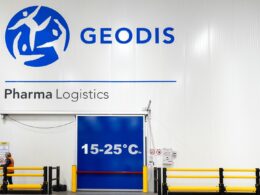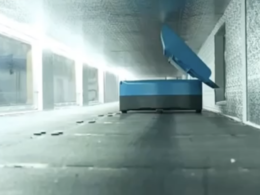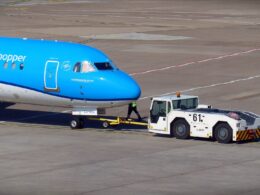Last month I exploded the myth that using GPRS temperature logging and real-time alarms during transit was expensive to run. And how, so long as it’s set up correctly, an iSense set to log every 15 minutes but only to transmit say every four hours, in the UK, Europe and the US costs less than £1 per week!
And I signed off with a promise to look at – having collected your valuable data – how to store it, how to expand that monitoring, and look at meeting global challenges in countries with poor network and intranet system. So here goes…
So taking food as an example, we can now monitor from farm to fork. We can monitor the production area of the food. We monitor the storage of the food in the factory, the cold store distribution, and the point of sale.
All that data is sent to the central Synergy software which accepts data from any number of sources. So in the factory, for example, there’s a fixed monitoring system monitoring freezers, fridges, cookers maybe, production areas and so on. The upload happens via radio to a receiver on the local intranet and then into the SQL database.
Data from the delivery trucks comes back over mobile phone network into the same database. If you have remote sites with no network access we can use radio sensors back to a data collector that transfers the data over the mobile phone network in to the same database.
The important point is that when the client or the auditor looks at the data what they see is seamless – every part of the operation is covered. And of us in logistics all know that transportation was always the big gap.
This multi-channel upload capability makes it very suited to places like Thailand Malaysia Indonesia and India, with poor network or intranet systems. Let me explain – in the UK, Europe and the US, for example, we’re used to multi-sites all being connected together and back to HQ. Paradoxically, the really sophisticated network stuff is really easy, and firms achieve that buzz word for a lot of globals – centralisation.
Where centralisation problems arise is when a client runs their own – dare I say it – home -made ‘server-based’ system, where every computer that is used to run the system from has to have individual software on it. So Sydney, Hong King, Shanghai, Kuala Lumpur and Tokyo. All with individual systems. Different systems. Different maintenance complications.
Surely, you say, just pop along to central IT and get them to design an adaptation to the main system. Well, my experience of many firms with a global network is that certainly managers and often the IT bosses themselves quake at the thought of touching the legacy system.
So we might work for a business with operations in France, Hungaria and Russia, and it takes a year to sort out a trivial problem just because of the legacy system. In Malaysia, cold chain distributors are often third party independent companies – all small firms dotted about and the big global brand has to regularly send staff out to each of those firms individually, simply to audit the conditions, making sure the ‘fridges are within temp band and so on.
A cloud-based solution is that it reduces project duration and complexity. Provision of cloud software is very fast. You don’t need to install software or servers, so projects can get off the ground in a day or two instead of months.
Secondly, agility requires that companies should enable and encourage innovation. Software-as-a Solution (SaaS) makes that possible in a way that traditional, perpetual software licensing cannot. Some SaaS vendors provide “Pay-as-you-go” licensing; which provides a commercial backdrop that fosters experimentation. Whereas old school thinking was “return on investment”, the advent of SaaS offers the potential of “return before investment”. People can now afford to experiment with technology-enabled initiatives, in a ‘test-and-learn’ manner.
We can set up a very easy system that goes out and just works on the mobile phone network no infrastructure, the big global doesn’t have to involve their IT people or touch the legacy system, and they love it because their centralised, integrated monitoring system is running rapidly and relatively inexpensive. There’s greater data security. Easy software upgrades across all bases. Plus, of course, they can impose it on their third party subcontractors with a fast inexpensive no risk cloud-based solution.
Of course, it’s not just about food chain. We’ve set up similar centralised cloud-based monitoring in a collection of museums around Qatar. They liked the fact there was no heavy network infrastructure overhead. And let’s not moan about IT departments. In some firms I visit, it’s actually their own IT department pushing the cloud-based centralisation. Some are very enlightened, and talk to me about how individual businesses within the group can now migrating all their separate systems, integrating into one central system. Data access is easy. Maintenance is easy, so from an IT point of view they’re not now maintaining half a dozen or more disparate servers.
Of course, there will always be dinosaurs. Some IT people are so possessive they wouldn’t want a cloud-based solution if you coated it in gold and gave it to them free. But then we all know what happened to the dinosaurs. Don’t we?
Derek Richardson is International Sales Director for The IMC Group












